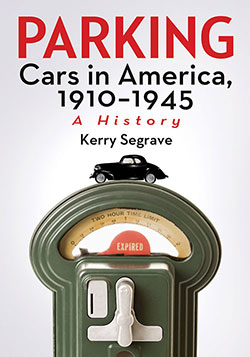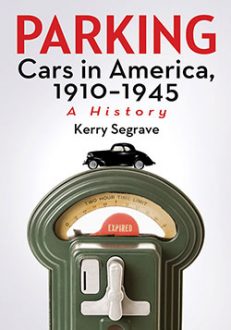Parking Cars in America, 1910–1945
A History
$29.95
In stock
About the Book
With its decentralized urban areas, pollution, and mostly inadequate public transit systems, America pays a heavy price for its dependency on cars. This volume explores one of the more pressing aspects of the problem—storage—from 1910 to the end of World War II, contrasting the reality and perception of car parking as found in the pages of the popular newspapers and magazines.
From early bans on street parking to street widening efforts to the introduction of parking lots, garages, and parking meters, the book chronicles attempts to accommodate the ever-increasing number of cars. By failing to effect any meaningful regulations along the way, this work shows, Americans slowly ceded authority and dominance to the automobile, to the detriment of present-day society.
About the Author(s)
Bibliographic Details
Kerry Segrave
Format: softcover (6 x 9)
Pages: 200
Bibliographic Info: notes, bibliography, index
Copyright Date: 2012
pISBN: 978-0-7864-7007-5
eISBN: 978-0-7864-9108-7
Imprint: McFarland
Table of Contents
Preface 1
Introduction 2
1. Banning Begins 5
2. Other Measures 33
3. The General Problem and Solutions 45
4. Garages 85
5. Parking Lots 99
6. Other Facilities 108
7. Parking Meters, the First Two Years 117
8. Parking Meters, Part 2 134
9. The General Problem and Solutions, 1945–1950 156
10. Conclusion 165
Notes 173
Bibliography 182
Index 190
Book Reviews & Awards
“a scholarly history on how U.S. municipalities tried to mitigate headaches on where to put cars as they exploded within American cities…deeply researched”—Hemmings Classic Car.





